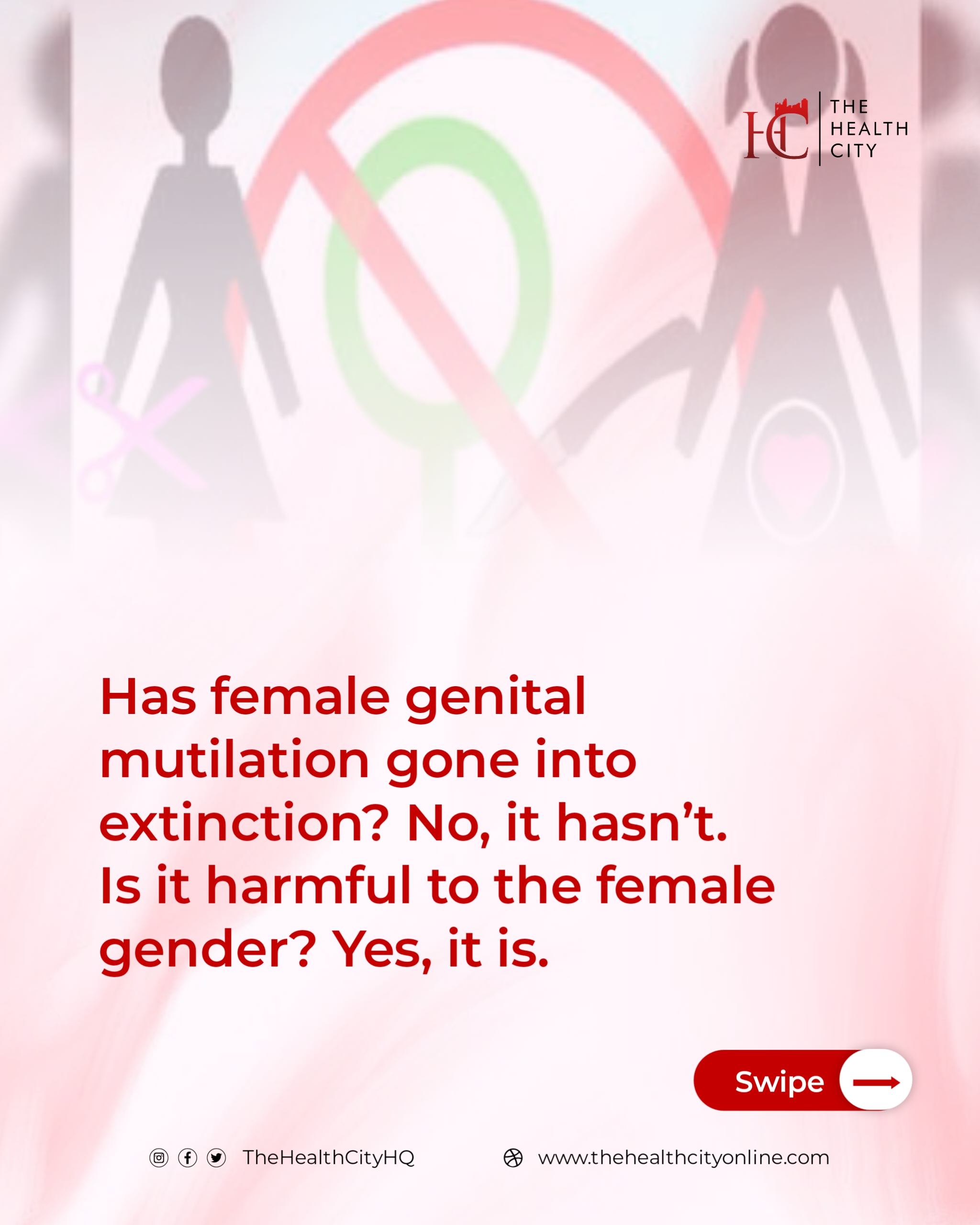
Female Genital Mutilation
Female genital mutilation (FGM), also known as female genital cutting (FGC) or female circumcision, is the partial or total cutting of the female genitals for non-medical reasons.
It is estimated that over 220 million females have had their genitals mutilated in at least 30 countries in Africa, the Middle East and Asia [World Health Organisation (WHO), 2025]. By 2030, more than 65 million girls risk FGM despite present efforts.
Nigeria is ranked third on the global list of countries with high FGM, accounting for about 10% (20 million) of the over 200 million global cases of females that have had FGM. Although efforts towards eliminating FGM are producing positive results with a reduction in the national prevalence, more needs to be done to eliminate FGM by 2030 as targeted (UNICEF, 2024).
FGM is usually carried out by traditional circumcisers or traditional birth attendants (TBA). Among the chief reasons for this practice are cultural reasons, which include respect for tradition and cultural identity, preserving virginity until marriage and fertility reasons. It has been established that FGM has no medical benefits but is harmful to health as it can cause consequences such as:
- Constant pelvic pain
- Painful sexual intercourse
- Infection
- Excessive bleeding
- Urine incontinence
- Depression
- Post-traumatic stress disorder (PTSD)
- Decreased sexual satisfaction
- Childbirth complications
What is FGM: The subtypes and extent
Female genital mutilation (FGM) includes all practices that involve the partial or complete removal of external female genitalia or other harm to the female genital organs for non-medical purposes (WHO, 2025). FGM has been categorised into four different types:
Type I (clitoridectomy): Removal of the external clitoris and/or prepuce.
Type II (excision): Removal of the clitoral glans and labia minora, with or without labia majora.
Type III (infibulation): Narrowing of the vaginal opening by cutting and repositioning the labia minora or majora, possibly with stitching.
Type IV: Other harmful procedures to female genitalia for non-medical purposes, such as pricking, piercing, scraping, and cauterising (WHO 2020).
What do we know about FGM in Nigeria?
Female genital mutilation (FGM) in Nigeria shows significant regional disparities. According to the NBS and UNICEF (2022), the South West zone has the highest prevalence of FGM (28.5% of women aged 15-49), followed by the South East (21.7%) and South South (21.4%). At the state level, Kwara State has the highest prevalence (58.3%), with other high-prevalence states including Ekiti (50.4%), Osun (44.7%), Oyo (43.2%), Kwara (46.0%), and Imo (38.0%).
Interestingly, while Kwara, Ekiti, and Osun have high prevalence rates, Lagos (2824), Kano (2592), and Katsina states (1608) have the highest number of women who had FGM due to their larger populations. Effective policy making requires addressing both high-prevalence areas and populous states. These statistics highlight the importance of intensified awareness, legal enforcement, and community engagement to combat FGM across Nigeria.
It is also important to note that some states, such as Zamfara and Gombe, report extremely low prevalence rates, with Zamfara at 0.1% and Gombe at 0.0%, proving that change is possible and that targeted interventions can lead to substantial progress.
What does the law say about it?
The Federal Government of Nigeria enacted a law in May 2015 criminalising FGM and other harmful practices through the Violence Against Persons Prohibition (VAPP) Act. Although this Act only operates in the Federal Capital Territory of Abuja initially, 32 out of the 36 states have also passed a similar law peculiar to their state. Nevertheless, there are gaps in implementing these laws, and more needs to be done to bring them to full force.
How can you help?
FGM is a serious sexual and reproductive health (SRH) concern that affects all of us. It is important, therefore, to support the fight against this practice that puts our girls and women at unnecessary risk. You can contribute to the fight against FGM through the following ways:
Taking responsibility: another step is to make up your mind on the responsibility you want to take. In what way exactly do you wish to contribute to this fight? If you're a researcher, you can conduct research on effective ways of eliminating FGM. If you're an activist, you can use your voice to tell the stories of survivors and influence public policy and the effective implementation of these policies.
Raising awareness: you can also join organisations and activists to raise awareness on the subject of FGM wherever you are. You can share with others why it is important to stop this practice.
Psychological support: You can also offer emotional and psychological support to survivors of this harmful practice. Encourage them and ensure they are not victimised by their condition. You can also help them make the right choices for their own children.
Female genital mutilation (FGM) is a serious, harmful practice that has no medical benefit. More than 200 million girls and women have had their genitals mutilated, with about 10% of these numbers residing in Nigeria. This practice is illegal in Nigeria, as in other countries of the world, and you can help in the fight against it by raising awareness, reporting practitioners and supporting survivors, among others.

 Kemuel Kefas
Kemuel Kefas
Latest Comments
No Comments Yet
To write a comment, You must be logged in
Login Here SIGN IN